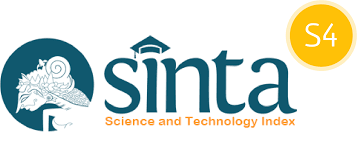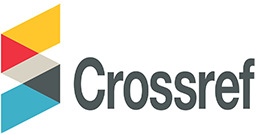Efektifitas Zat Aktif Fipronil pada berbagai Substrat Fagostimulan untuk Pengendalian Kecoak Jerman (Blattella germanica L.)
Abstract
German cockroach (Blattella germanica L.), is a residential insect pest and vector of various diseases. To control its population, alternative chemical control models with Fipronil 0.03% are now being developed. Fipronil has been proven to be effective and has no resistance. To increase the effectiveness of the bait in controlling German cockroaches, a fipronil 0.03% combination needs to be developed with a phagostimulant bait of bananas, durian, erythisol sugar, and sugar formulation, so this study needs to be done. This study used an experimental method with a randomized block design (RBD), five treatments such as A: bait with a combination of banana phagostimulant and 0.03% fipronil, B: bait with a combination of durian phagostimulant and 0.03% fipronil, C: bait with a combination erythisol phagostimulant and 0.03% fipronil, D: bait with a combination of sugar phagostimulant and 0.03% fipronil, K: bait with a combination of matrix and fipronil 0.03% (control positive) was used for the interest test, and bait with a matrix without fipronil 0.03% (control negative) was used for mortality testing. The observations the average results for durian, banana, sugar formulated, erytrisol sugar and controls, respectively 20%, 20%, 21.6%, 12.4%, and 22.8%, while the results bait consumed with durian stimulation are 0.29g, banana 0.31g, sugar formulation 0.28g, erytrisol sugar 0.26g and control 0.24g. However, based on statistical tests, the results of the interest test with the feed consumption test between treatments showed no significant difference (p>0.05). The test results in mortality of cockroaches Germany's feed with phagostimulan durian, banana, formulations sugar, sugar erytrisol and control consecutively 98% 100 %, 98%, 98%, and 20%, based on the statistical test there is a significant difference (p<0.05), where the difference based on the Duncan test is their treatment compared to control.
References
Amalia, H. & Harahap, I. S., 2010. Preferensi Kecoa Amerika Periplaneta americana (L.) (Blattaria: Blattidae) terhadap Berbagai Kombinasi Umpan. J. Entomol. Indon, 7(2): 67-77.
Arifah, F. G., Hestiningsih, R. & Rahadian, R., 2016. Preferensi Kecoak Amerika Periplaneta americana (L.) (Blattaria : Blattidae) terhadap Baiting Gel. Jurnal Kesehatan Masyarakat (e-Journal), 4(4): 289-297.
Cooper, R. A. & Schal, C., 1992. Differential Development and Reproduction of the German Cockroach (Dictyoptera: Blattellidae) on Three Laboratory Diets. Journal of Economic Entomology, 85(3): 838-844.
Connelly, P. 2001. Environmental Fate of Fipronil, Environmental Monitoring Branch,Department of Pesticide Regulation. California: California Environmental Protection Agency.
El-Sharabasy, H. M., Mahmoud, M. F., El-Bahrawy, A. F. & El-Badry, Y. S., 2014. Food Preference of the German Cockroach, Blattella germanica (L.) (Dictyoptera: Blattellidae). Cercetări Agronomice în Moldova, XLVII(2).
Enviromental Health Watch, 2005. Factsheet Cockroach Control Guide. Enviromental Health Watch. Di akses pada tanggal 17 mei 2019.
Gore, J. C. & Schal, C., 2004. Gene Expression and Tissue Distribution of the Major Human Allergen Bla g 1 in the German Cockroach, Blattella germanica L. (Dictyoptera: Blattellidae). Journal of Medical Entomology, 41(5): 953-960.
Gunasekara, A.S., Truong, T., Goh, S.K., Spurlock, F. And Tjeerdema, R.S., 2007. Environmental fate and toxicology of fipronil. Journal of Pesticide Science, 32(3): 189-199.
Jensen, K., Katsumata, A. W., Schal, C., & Silverman, J. 2017. Persistence of a Sugar-Rejecting Cockroach Genotype Under Various Dietary Regimes. Scientific Report, 7: 1-10
Lauprasert, P., Sitthicharoenchai, D., Thirakhupt, K. & Pradatsudarasar, A.O., 2006. Food Preference and Feeding Behavior of the German Cockroach, Blattella germanica (Linnaeus). J. Sci. Res. Chula. Univ., 31(2): 121-126.
Madona, W. R., Rahayu, R., Dahelmi & Hariani, N., 2015. Efektivitas Insektisida Komersial Terhadap Kecoak Jerman (Blattella Germanica L.) Strain VCRU-WHO, GFA-JKT dan PLZ-PDG dengan Metode Kontak (Glass Jar). Jurnal Biologi Universitas Andalas (J. Bio. UA.), 4(2): 113-118 .
Mahmoud, M. F., El-Bahrawy, A. F., El-Sharabasy, H. M. & El-Badry,Y. S., 2013. Ecological Investigation, Density, Infestation Rate and Control Strategy of German Cockroach, Blattella germanica (L.) in Two Hospitals in Ismailia, Egypt. Arthropods, 2(4): 216-224.
Nojima, S., Nishida, R., & Kuwahara, Y. 1999. Nuptial feeding stimulant: a male courtship pheromone of the German cockroach, Blattella germanica (L.) (Dictyoptera: Blattellidae). Naturwissenschaften, 86: 193-196.
Nasirian, H., Ladonni, H., & Vatandoost, H. 2006. Duration of Fipronil Topical Application Toxicity in Blattella germanica Field Population Strains. Pakistan Journal of Biological Sciences, 9(5): 800-804
O'Donnell, S., Baudier, K., Marenda, D.R., 2016. Non-nutritive polyol sweeteners differ in insecticidal activity when ingested by adult Drosophila melanogaster (Diptera: Drosophilidae). J. Insect Sci. 16
Putra, A. H., 2018. Preferensi Pakan Beberapa Strain Kecoak Jerman, Blattella Germanica (Dictyoptera: Blattellidae). Jurnal Pendidikan Biologi dan Biosains, 1(1): 7-14.
Raini, M. 2009.Toksisitas Insektisida Rumah Tangga dan Pencegahan Keracunan. Artikel. Media Penelitian dan Pengembangan Kesehatan. 19(2): 1-9.
Sholehah, D. N. & Djunaedy, A., 2015. Potensi Berbagai Limbah Pertanian Sebagai Anti Rayap. Agrovigor, 8(1): 68-72.
Sigit, S. H., Koesharto, F., Hadi, U. K. & Gunandini, D. J., 2006. Hama Permukiman Indonesia: Pengenalan, Biologi dan Pengendalian.Bogor: Unit Kajian Pengendalian Hama Permukiman, Fakultas Kedokteran Hewan, Institut Pertanian Bogor.
Silverman, J. & Ross, M.H., 1994. Behavioral Resistance of Field-Collected German Cockroaches (Blattodea: Blattellidae) to Baits Containing Glucose. Physiological and Chemical Ecology, 23(2): 425-430.
Silverman, J. & Bieman, D.N., 1993. Glucose Aversion in the German Cockroach, Blattella germanica. J. Insect Physiol, 39(11): 925-933
Tanga, S.B., Lee, J. C., Jung, J. K. & Choi, M.Y., 2017. Effect of erythritol formulation on the mortality, fecundity and physiological excretion in Drosophila suzukii. Journal of Insect Physiology, 101: 178-184.
Wang, C., Scharf, M. E. & Bennett, G. W., 2004. Behavioral and Physiological Resistance of the German Cockroach to Gel Baits (Blattodea: Blattellidae). Journal of Economic Entomology, 97(6): 2067-2072.
Winarno FG. 2001. Hama Gudang danTeknik Pemberantasannya.Bogor: M Brio Press.
World Health Organization. 2006. Pesticides and Their Application for Control of Vectors and Pest of Public Health Importance, sixth adition, Departemen of Control Neglected Tropical Disease WHO Pesticide evaluation scheme (WHOPES)
Zhao, X., Salgado, V.L., Yeh, J.Z., & Narahashi, T. 2003. Differential Actions of Fipronil and Dieldrin Insecticides on GABA-gate Chloride Channels in Cockroach Neurons, JPET. 103.051839














_copy.png)



